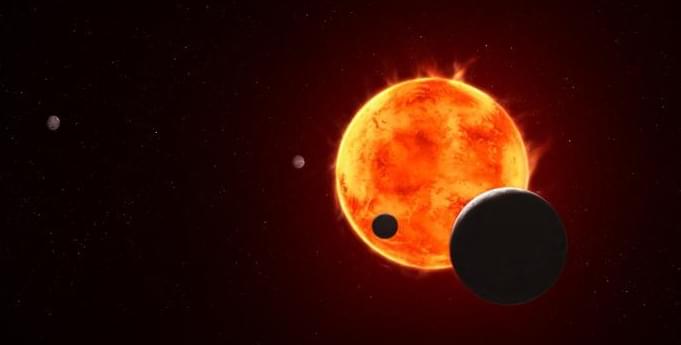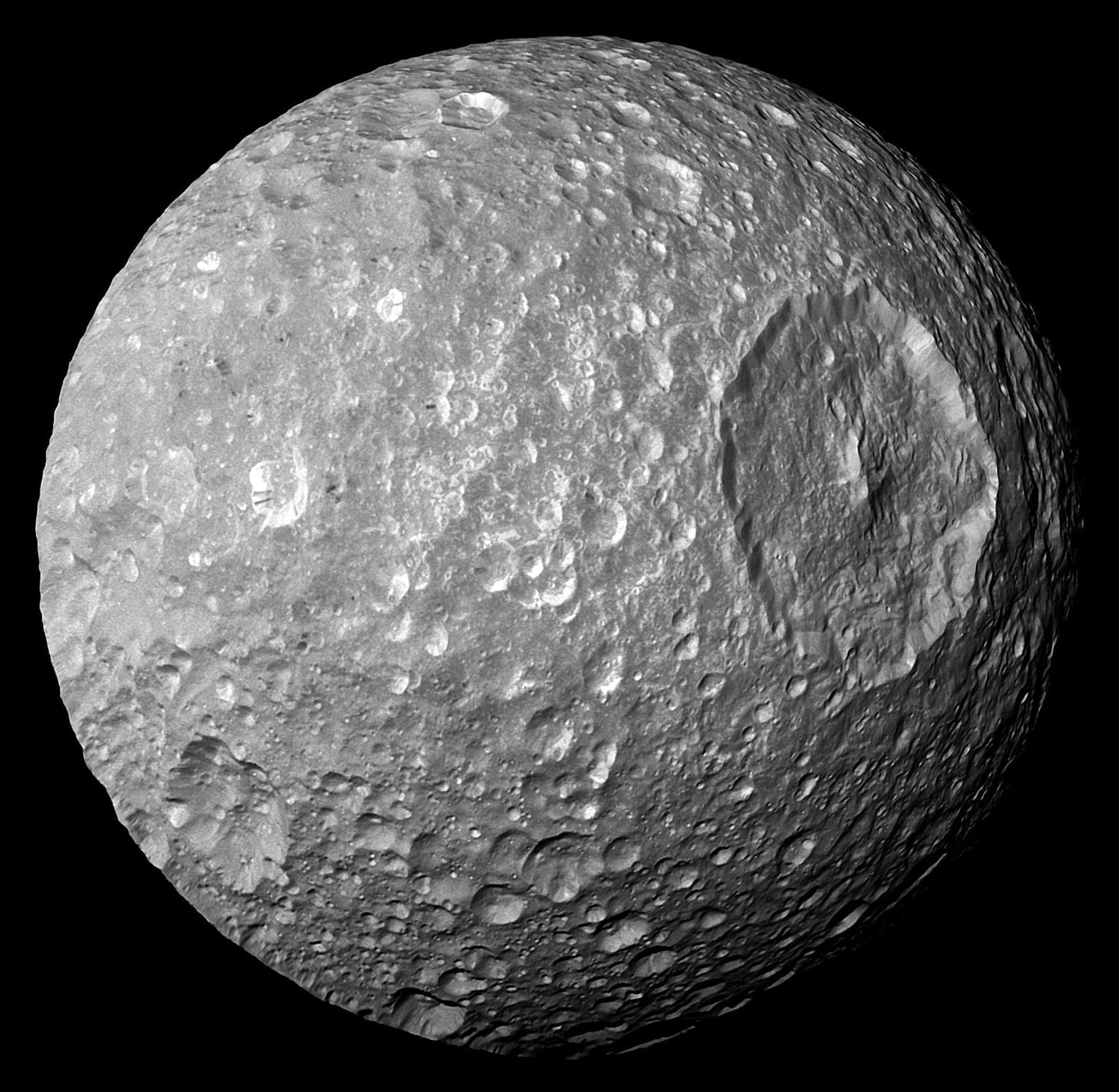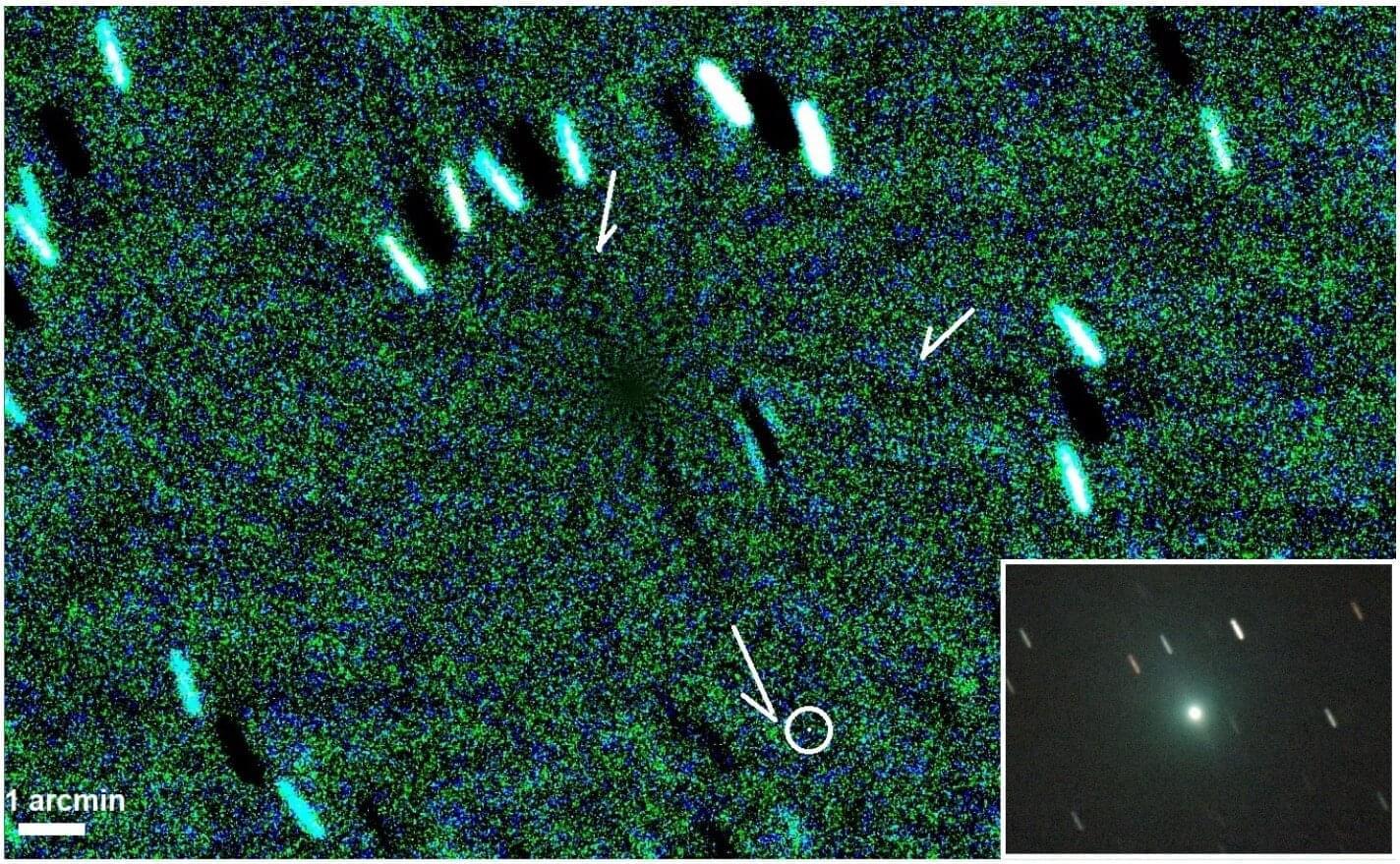An exploration of whether when a civilization develops AI, it convinces or compels them to not attempt interstellar travel for its own reasons and motives.
My Patreon Page:
/ johnmichaelgodier.
My Event Horizon Channel:
/ eventhorizonshow.
Music:
An exploration of whether when a civilization develops AI, it convinces or compels them to not attempt interstellar travel for its own reasons and motives.
My Patreon Page:
/ johnmichaelgodier.
My Event Horizon Channel:
/ eventhorizonshow.
Music:

For 10 months, a SETI Institute-led team watched pulsar PSR J0332+5434 (also called B0329+54) to study how its radio signal “twinkles” as it passes through gas between the star and Earth. The team used the Allen Telescope Array (ATA) to take measurements between 900 and 1,956 MHz and observed slow, significant changes in the twinkling pattern (scintillation) over time.
The research is published in The Astrophysical Journal.
Pulsars are spinning remnants of massive stars that emit flashes of radio waves, a type of light, in very precise and regular rhythms, due to their high rotation speed and incredible density. Scientists can use sensitive radio telescopes to measure the exact times at which pulses arrive in the search for patterns that can indicate phenomena such as low-frequency gravitational waves.

In a significant advance for astronomy, researchers from the Breakthrough Listen initiative, working in collaboration with NVIDIA and utilizing their system on the SETI Institute’s Allen Telescope Array (ATA) in California, have improved the process for detecting Fast Radio Bursts (FRBs). Their newly developed artificial intelligence system outperforms existing methods, operating hundreds of times faster than current pipelines while maintaining accuracy.
Detailed in the peer-reviewed journal Astronomy & Astrophysics, the new system operates on NVIDIA’s Holoscan platform, designed to process massive streaming datasets in real-time. Traditionally, FRB detection requires “dedispersion” — searching through thousands of possible signal parameters to correct for frequency-dependent time delays. The new end-to-end AI architecture eliminates that bottleneck, analyzing signals in real time and transforming how astronomers search for transient and potentially artificial signals from space.
The performance gains are notable. At the ATA, the state-of-the-art pipeline currently takes approximately 59 seconds to process 16.3 seconds of observational data — nearly four times slower than real-time. The new AI-driven system performs the same task 600 times faster, operating over 160 times faster than real-time.

Based on our most recent work, we suggest that the previously reported tentative hint of an atmosphere is more likely to be ‘noise’ from the host star,” said Dr. Sukrit Ranjan. “However, this does not mean that TRAPPIST-1e does not have an atmosphere – we just need more data.
Does the Earth-sized TRAPPIST-1e have the conditions for supporting life as we know it, specifically an appropriate atmosphere? This is what several studies published in The Astrophysical Journal Letters hopes to address as a team of scientists investigated the potential for TRAPPIST-1e to possess an atmosphere while throwing caution to the wind regarding the findings. This study has the potential to help scientists better understand the potential habitability of not only planets within the TRAPPIST-1 system, but also other exoplanetary systems throughout the universe.
For the first and second study, the researchers used NASA’s James Webb Space Telescope to observe the atmosphere of TRAPPIST-1e, which is located approximately 40 light-years from Earth. The TRAPPIST-1 system has long been targeted by the scientific community due to the system containing seven known Earth-sized worlds. The unique aspect about the TRAPPIST-1 system is its M-dwarf star, which is both smaller and cooler than our Sun, but also means its lifetime is far greater than our Sun, strengthening the possibility of finding habitable planets orbiting them.
After analyzing the data, the first paper attempted to reduce the parent star’s activity that might be interfering with observations and conclude that TRAPPIST-1e does not have a hydrogen atmosphere. The second paper concludes with the possibility of TRAPPIST-1e having a nitrogen atmosphere with traces of carbon dioxide and methane, while a third paper stresses that further studies are required for a complete analysis and determination of TRAPPIST-1e’s atmospheric characteristics.

Great, but where on earth is the EU in this new space race?
HELSINKI — China is charting a long-term deep space strategy centered on planetary habitability and the search for extraterrestrial life, according to a newly revealed mission roadmap.
A slide titled “habitability and search for extraterrestrial life — guiding the future development of China’s planetary exploration,” was shared on Chinese social media by the country’s Deep Space Exploration Laboratory (DSEL), a national-level research institution under the China National Space Administration (CNSA). It outlines a number of planned and potential missions, many with astrobiological implications.
The first mission is the Tianwen-3 Mars sample return mission, already approved and currently scheduled to launch around late 2028. Among its main objectives is investigating potential traces of past or present life on Mars.

The outer planets of the solar system are swarmed by ice-wrapped moons. Some of these, such as Saturn’s moon Enceladus, are known to have oceans of liquid water between the ice shell and the rocky core and could be the best places in our solar system to look for extraterrestrial life. A new study published Nov. 24 in Nature Astronomy sheds light on what could be going on beneath the surface of these worlds and provides insights into how their diverse geologic features may have formed.
“Not all of these satellites are known to have oceans, but we know that some do,” said Max Rudolph, associate professor of earth and planetary sciences at the University of California, Davis and lead author on the paper. “We’re interested in the processes that shape their evolution over millions of years and this allows us to think about what the surface expression of an ocean world would be.”
How geology works on icy moons From mountains to earthquakes, Earth’s surface geology is powered by the movement and melting of rock deep inside the planet. On icy moons, geology is driven by the action of water and ice.

Analysis of the second confirmed interstellar comet to visit our solar system suggests that the alien body could be covered in erupting icy, volcano-like structures called cryovolcanoes. Researchers also discovered that the comet has a metal-rich interior, which could challenge our understanding of how comets formed in our own planetary system.
The scientists tracked Comet 3I/ATLAS from July to November 2025 as it hurtled toward our sun. It presented a rare opportunity to study an object formed around another star in interstellar space. What makes it so valuable is that it is pristine, having never passed close enough to a star to be heated, melted, or otherwise altered by radiation. That means it is almost the same as it was when it formed billions of years ago in its home system.
Discover the 15 most advanced alien races ever imagined in science fiction—from reality-bending cosmic civilizations to hyper-intelligent species capable of rewriting the laws of physics.
In this video, we explore how these alien races evolved, the technologies they command, and why they stand above all others in the sci-fi universe. Whether you’re into Star Wars, Star Trek, Marvel, DC, Mass Effect, Stargate, Halo, or classic literature, this countdown covers the most iconic and most powerful extraterrestrial species ever written.
👉 Which alien race do YOU think is the most advanced? Drop your pick in the comments!
If you love sci-fi lore, alien analysis, worldbuilding breakdowns, and deep-dive rankings, make sure to LIKE, SUBSCRIBE, and hit the bell for more universe-spanning content!

“Our upbringing and environment influence who we are,” said Dr. Luke Davies. “Someone who has lived their whole life in the city may have a very different personality compared to someone who lives remotely or in an isolated community. Galaxies are no different.”
How does galaxy location drive galaxy structure and star formation? This is what a recent study published in the Monthly Notices of the Royal Astronomical Society hopes to address as a team of scientists investigated the interaction between galaxy location and evolution. This study has the potential to help scientists better understand galaxy formation and evolution, including stars and planets within them.
For the study, the researchers conducted the first study with the Deep Extragalactic Visible Legacy Survey (DEVILS) survey using the Anglo-Australian Telescope’s AAOmega spectrograph, the latter of which is located at Siding Spring Observatory in Australia. The goal of the study was to use DEVILS to add to the existing catalog of galaxy populations based on their speed traveling away from us, also known as redshift. In contrast, blueshift happens when an object is moving towards us.
In the end, the researchers found that galaxies that are clustered together, or more densely packed, result in slower growth and evolution compared to galaxies that are spread apart. The researchers used the analogy of city centers compared to more rural areas. Essentially, a galaxy’s location potentially determines its evolutionary fate.
This video explains the leading theory about the origins of Pluribus and the hive mind’s ultimate purpose. Its terrifying plan unfolds in 4 steps. If you’re fascinated by hard sci-fi, the Dark Forest Hypothesis and alien civilizations, then this deep dive is for you.
This is a commentary video about the Plur1bus TV series streaming on Apple TV.
Chapters:
00:27 Step 1 — The Joining.
01:38 Step 2 — The Megastructure Antenna.
02:50 Step 3 — Interstellar Hive Mind.
04:10 Step 4 — The Universal Mind.
Footage:
Produced in part with SpaceEngine PRO © Cosmographic Software LLC.
Some elements in this video are also made with the help of artificial intelligence.
Music:
\